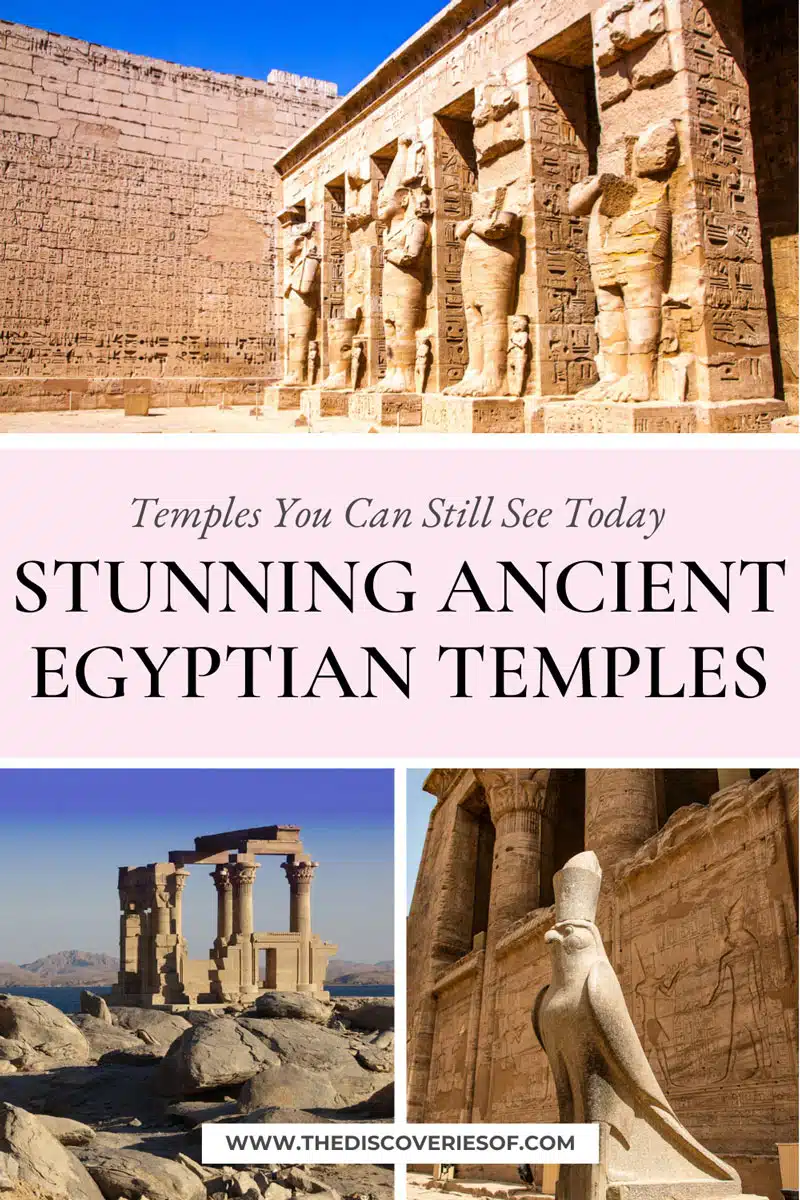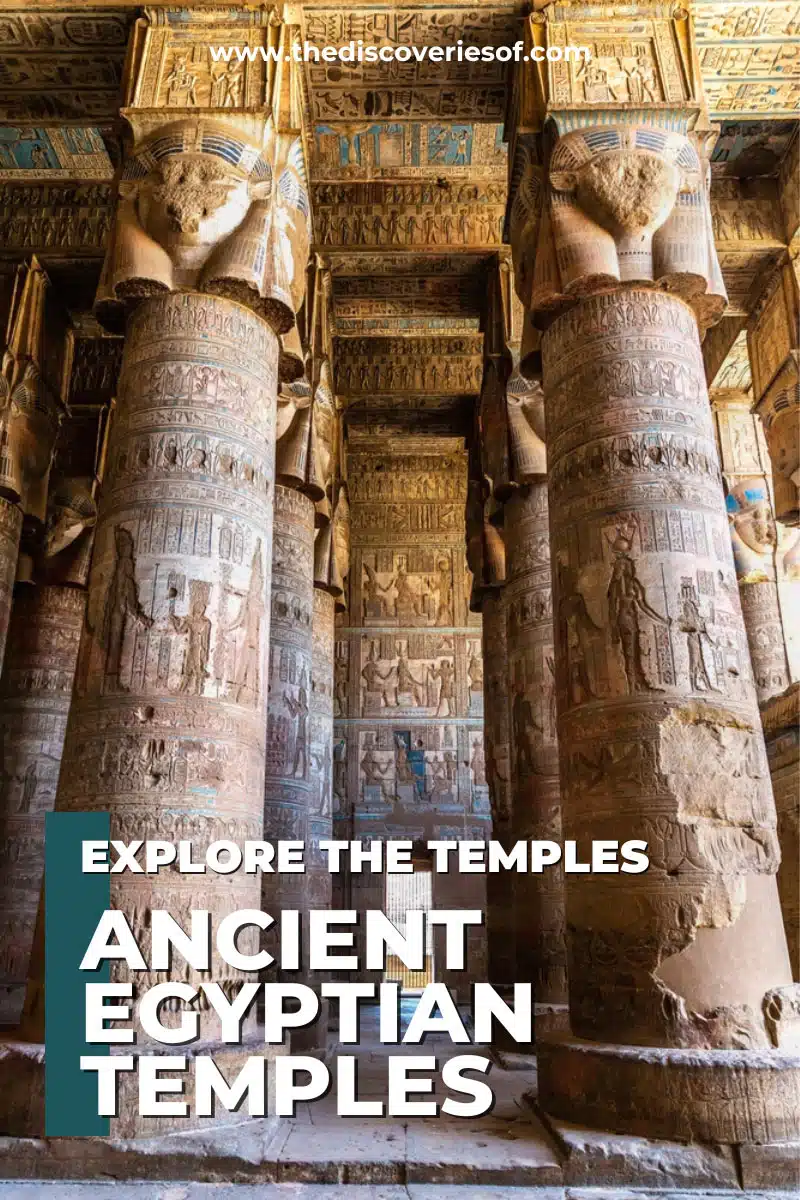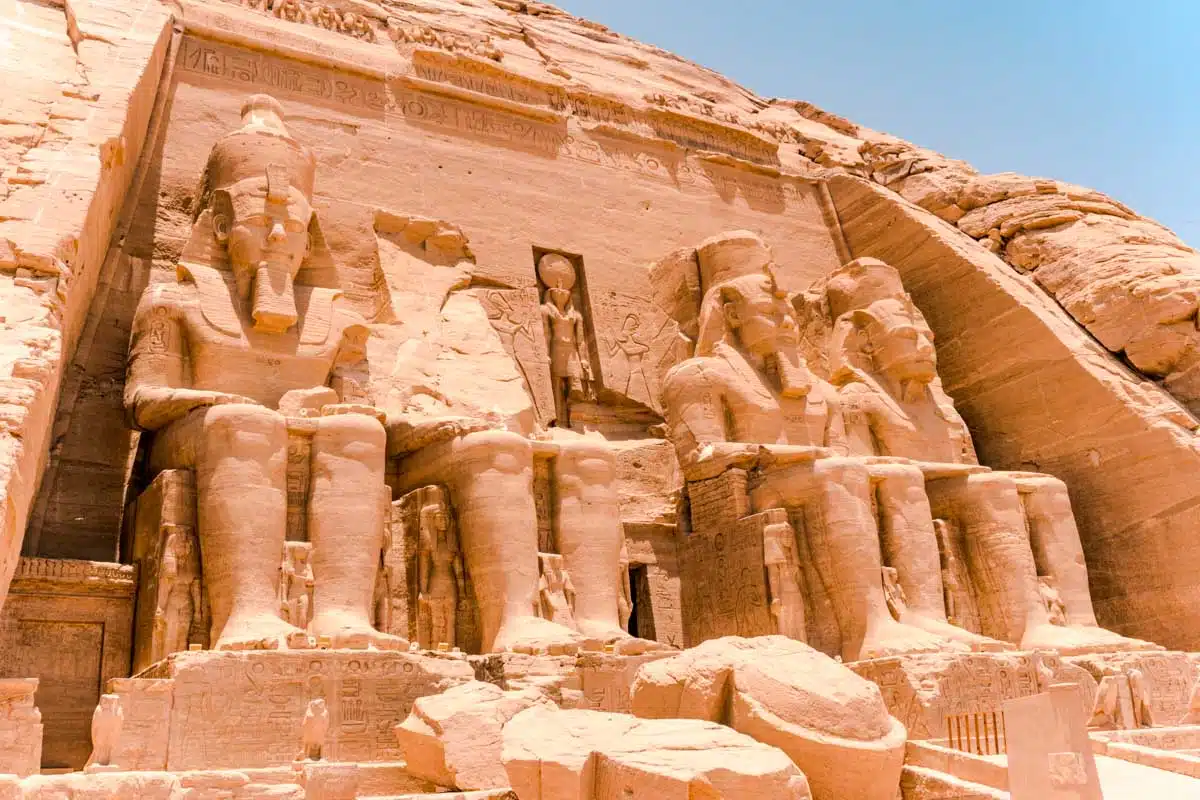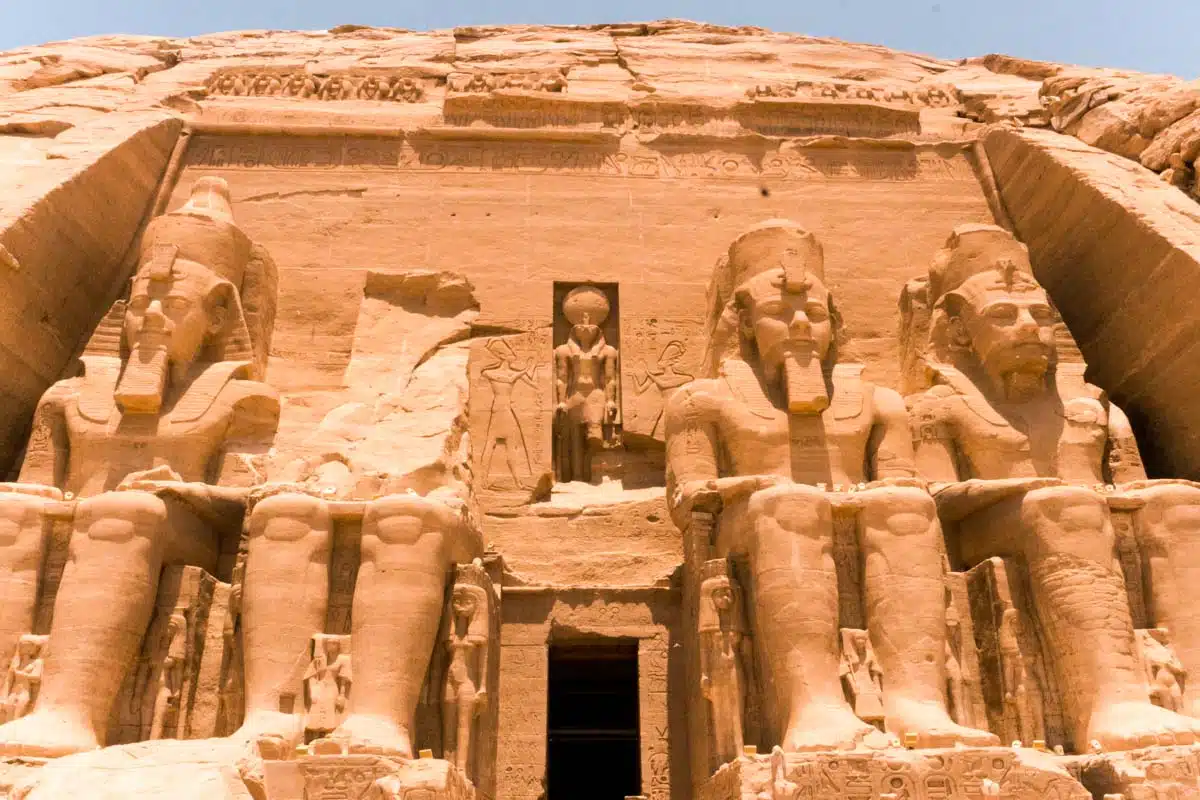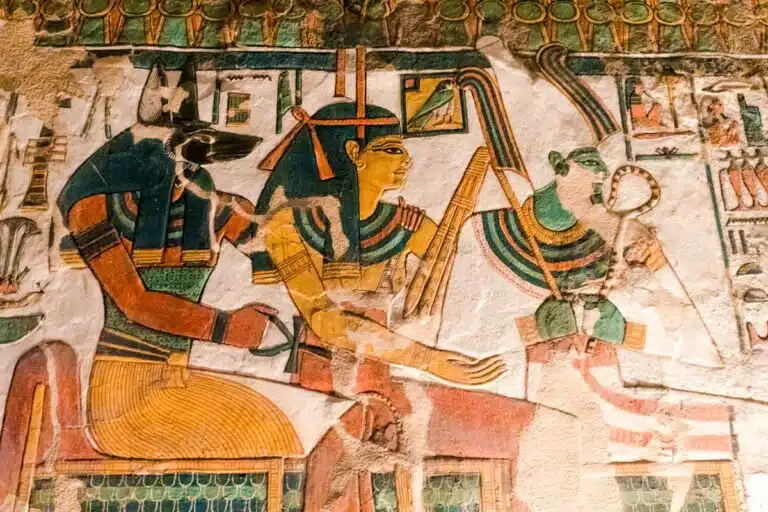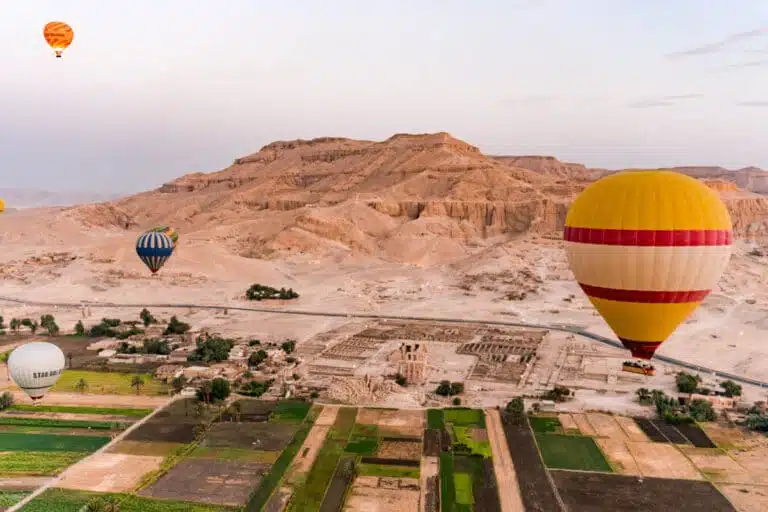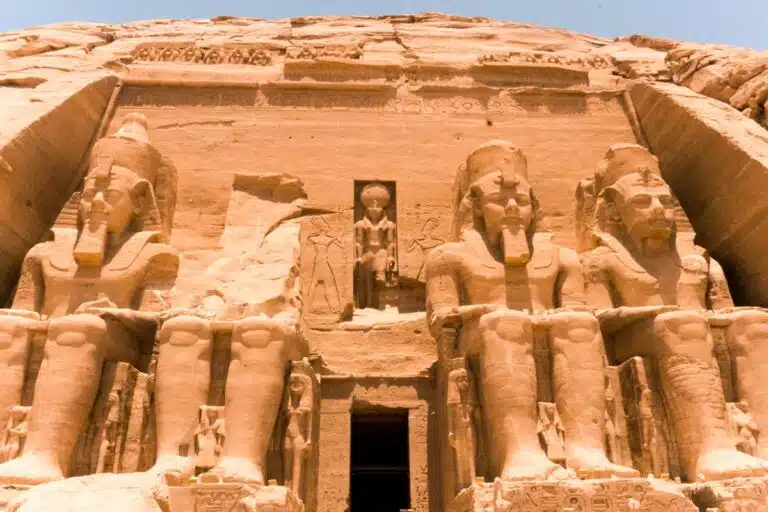Welcome to the mystical realm of Ancient Egyptian temples – column-lined corridors that have borne witness to millenia of sacred ceremonies. Join me as we explore the magnificent Egyptian temples you can still see today.
Ancient Egypt still influences our lives today. Thousands of years after the Ancient Egyptian age ended, several enchanting temples remain to visit and explore.
Historians date the beginning of Ancient Egypt to the Early Dynastic Period, which began in 3150 BC, before running through to 332 BC and the advent of Greco-Roman Egypt. For almost 3,000 years, Ancient Egypt was one of the most advanced civilisations on the face of the Earth.
Incredibly, many of the temples and tombs that have led us to understand so much about this long-distant period in history remain and make an essential part of any visit to Egypt, whether you’re a history buff (I certainly am!) or simply love to view the incredible.
Ready to delve into times long past and seek out the majesty of Ancient Egypt? Let’s get our geek on and jump right in!
Best Ancient Egyptian Temples You Can Still See Today
Karnak
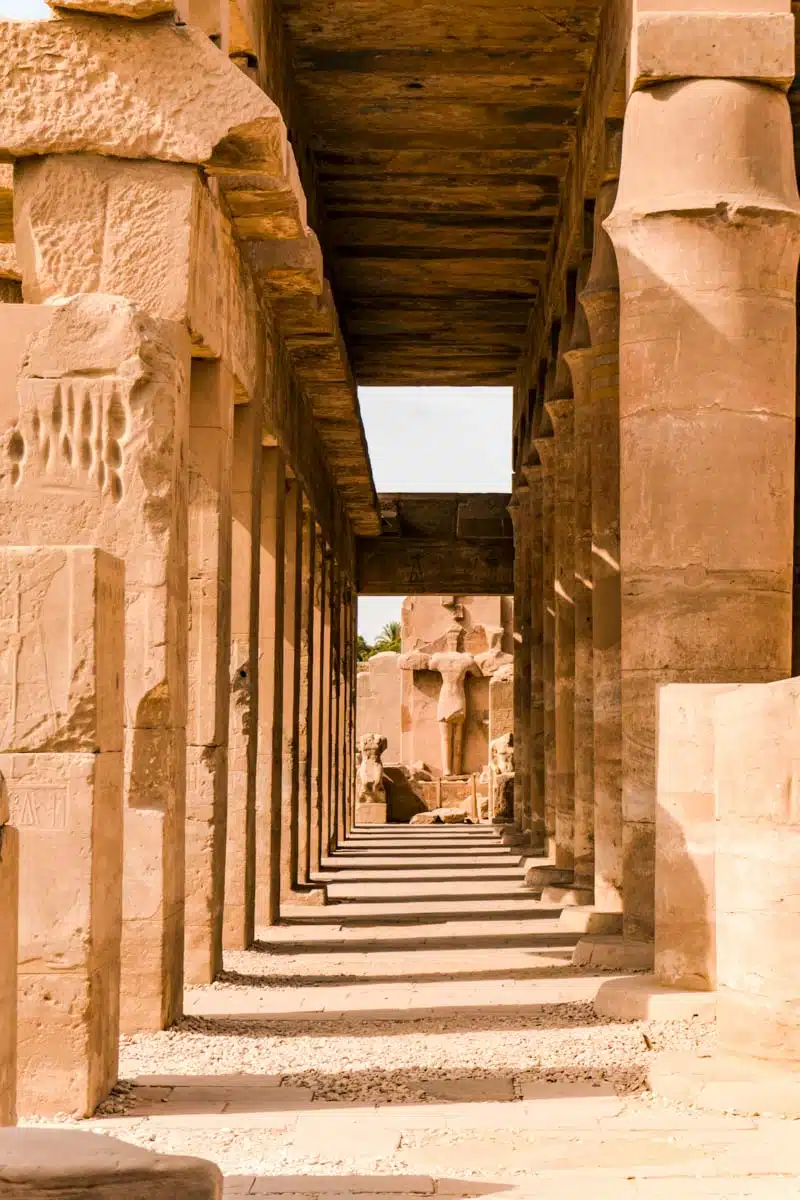
If you’re visiting a site that took almost 2,000 years to build, you’d want to be wowed, wouldn’t you? Thankfully, Karnak Temple near the city of Luxor does not disappoint!
Made up of sanctuaries, pylons, and enormously imposing stone pillars, Karnak was mainly dedicated to the Theban Triad.
A string of Pharaohs lent their help to build the complex, making it the most remarkable religious site during the era of the New Kingdom. The Avenue of Sphinxes lies at the entrance leading to the Great Temple of Amun and an awe-inspiring hypostyle hall.
Do
You may wish to join a tour, in which case I’ve heard great things about the Karnak Sound and Light Show with Dinner. However, if you’re happy to head there under your own steam, you can easily take a taxi or bus or drive a hire car to the site.
Philae
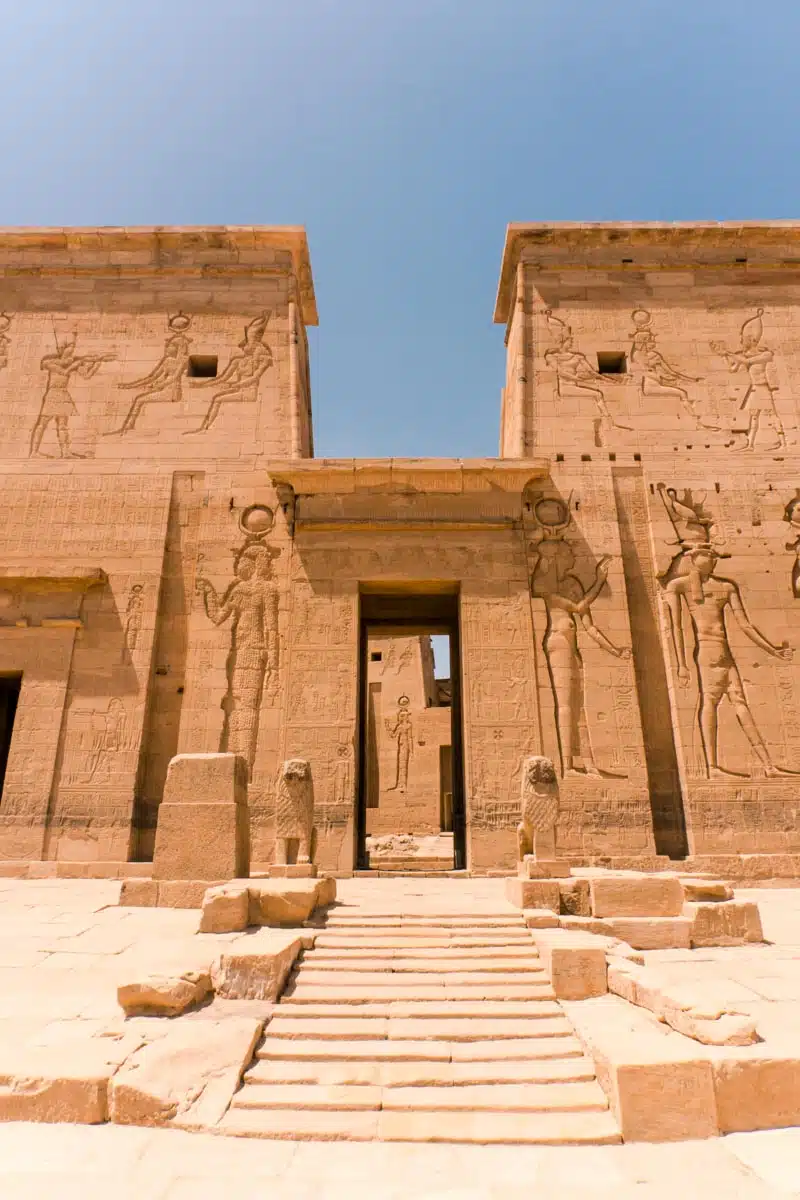
Philae Temple is a stunning site, even by the incredibly high standards of Ancient Egyptian monoliths. With massive towering walls adorned with hieroglyphics, Phiale dates back to 280 BCE, technically at the beginning of the Greco-Roman age, making it the last classical Egyptian-style temple. Fittingly, “Philae” means “the end” in Greek.
Dedicated to the cult of Isis, the columns of its hypostyle hall remain in remarkable condition. At the same time, the carved musical scene in the Temple of Hathor retains its authentic ancient charm.
Do
You can take a taxi or a horse-drawn carriage from Aswan to the boat dock for the Temple of Isis before boarding a boat to reach Agilkia Island.
Alternatively, take a private guided tour to Philae Temple and learn more about its incredible history.
Abu Simbel
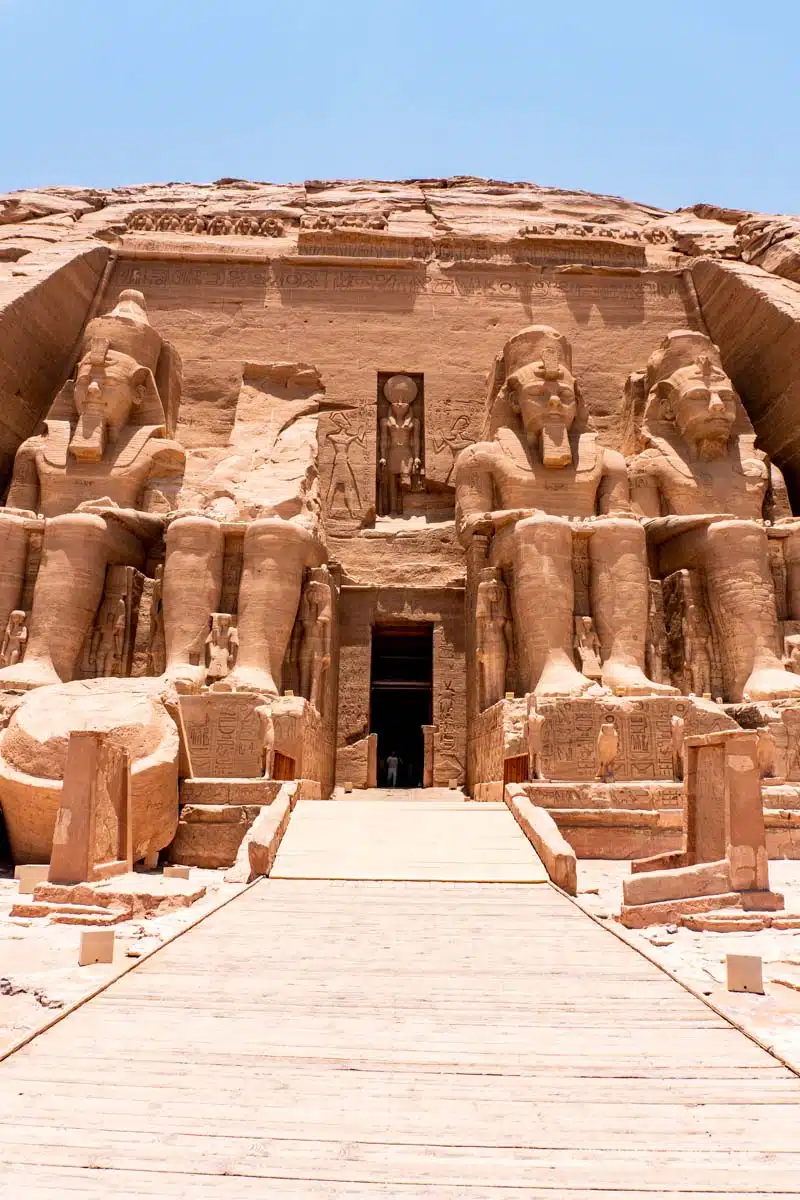
Another of the must-visit sites, when you’re in Aswan, is a trip to Abu Simbel, which is, if anything, even more incredible a testament to Ancient Egyptian engineering and architectural design than Phiale.
Containing two colossal rock temples built in the 13th century BCE during the reign of Rameses II, or Rameses the Great, the temples are built in his honour and that of his beloved Queen Nefertari. The construction of each temple and its ornate carvings took 20 years.
Dedicated to the gods Amun, Ra-Horakhty, Ptah, and Rameses, they are considered the finest temples commissioned during his reign.
Do
Touring with the in-depth knowledge of an Egyptologist is the perfect way of learning about Abu Simbel. Alternatively, you can visit by road, approximately a 3-hour drive from Aswan. A bus runs from Aswan and Abu Simbel once daily, so you would need to stay overnight at Abu Simbel.
Luxor Temple
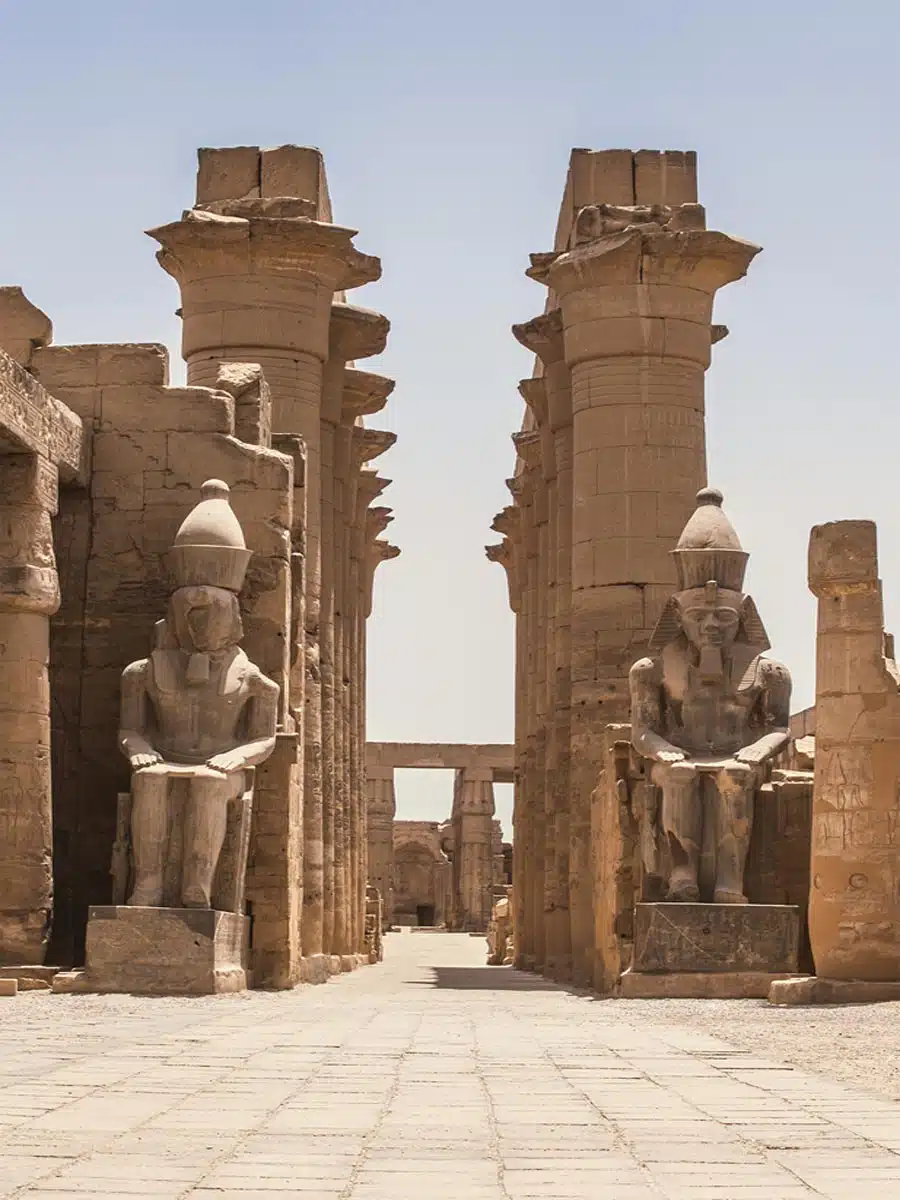
For anyone wanting to know how Ancient Egypt became one of the ancient world’s greatest nations, visiting Luxor Temple is a must.
The temple is arguably Ancient Egypt’s most extraordinary time capsule, sitting in the heart of downtown Luxor yet as far removed from the modern city as you could imagine. Built in dedication to pharaohs of the New Kingdom, the temple was built by Amenhotep III and Rameses II before being added to by several other ancient Kings to create the treasure trove it is today.
The Avenue of Sphinxes and the vast number of statues depicting Egyptian rulers lead the way to the temple gates, beyond which are courtyards dedicated to Amenhotep and Rameses.
Do
Luxor Temple is in downtown Luxor, meaning it’s an easy walk if you’re already in town. A full-day highlights tour of the city is the ideal way to take in the sights and history of this incredible monument to Ancient Egypt.
Mortuary Temple Hatshepsut
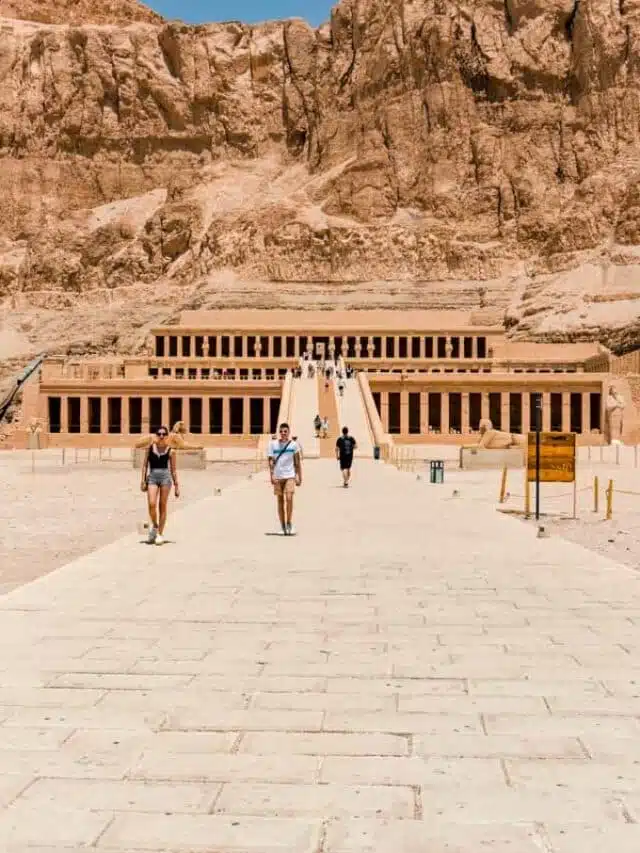
Staying in Luxor, the Mortuary Temple of Hatshepsut was designed by Pharaoh Hatshepsut shortly after her ascent to power. Created to tell her life story, amplify her accomplishments, and be a grand edifice, it’s fair to say she achieved her mission.
This is one of the most wondrous sights in Egypt, with the colossal temple embedded into the cliffs of the Theban Necropolis. The 19th century saw this incredible structure undergo significant restoration.
The sprawling colonnaded terrace has a remarkably contemporary feel, and the elegant symmetry of the temple provides a stark contrast to the enormous cliff face towering above it.
Do
If you’re alone, the easiest way to get to the temple is by taxi. The beautiful route takes you along the banks of the Nile and across Luxor Bridge. Otherwise, I recommend this day tour of the Valley of the Kings and the temple for additional expert guidance.
Edfu
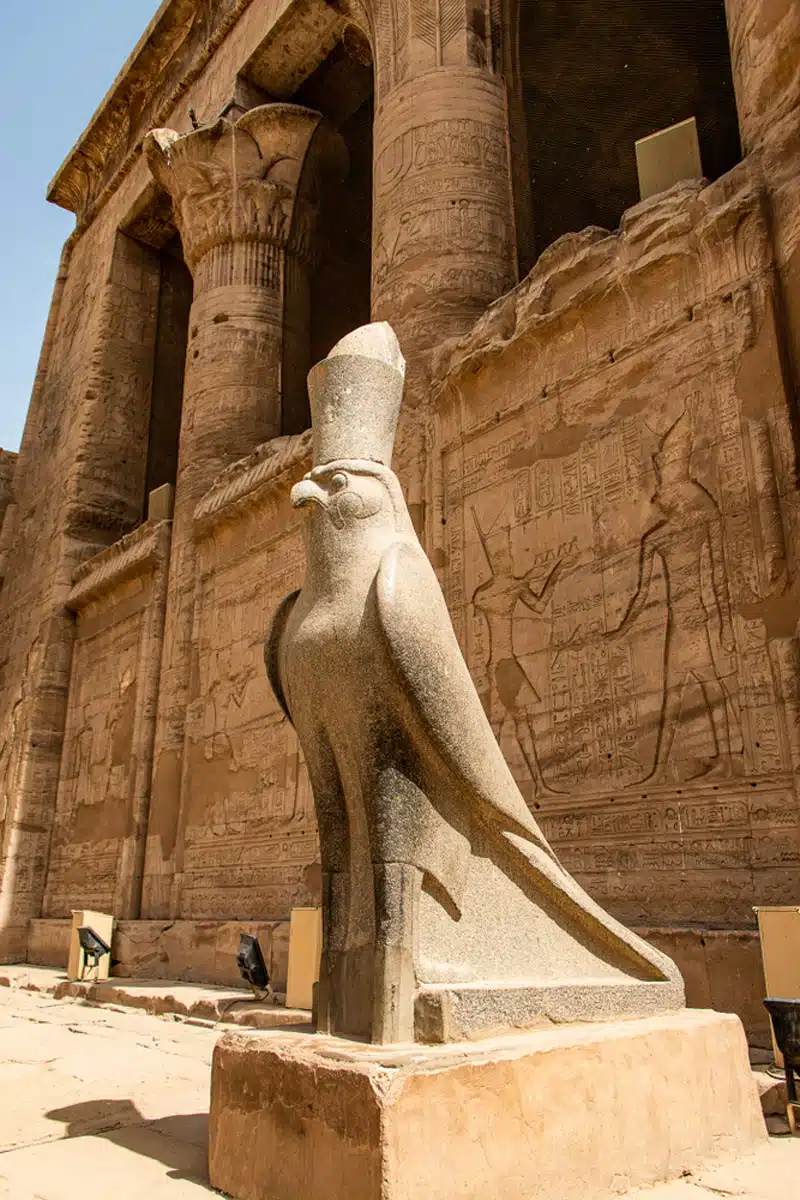
The Temple of Horus at Edfu is one of the best-preserved Ancient Egyptian temples, having been buried for over two centuries under almost 12 metres of desert sand and silt from the River Nile.
Horus is one of Egypt’s most recognisable and important historical gods, with statues of the falcon-headed deity lining the complex.
This magnificent temple with extensive wall carvings has proven a valuable historical source about the early Greco-Roman period of Egyptian History.
Do
I recommend the Edfu and Kom Ombo Day Tour with a transfer from Luxor. Alternatively, Edfu is about equidistant between Aswan and Luxor, each well-connected by road.
Kom Ombo
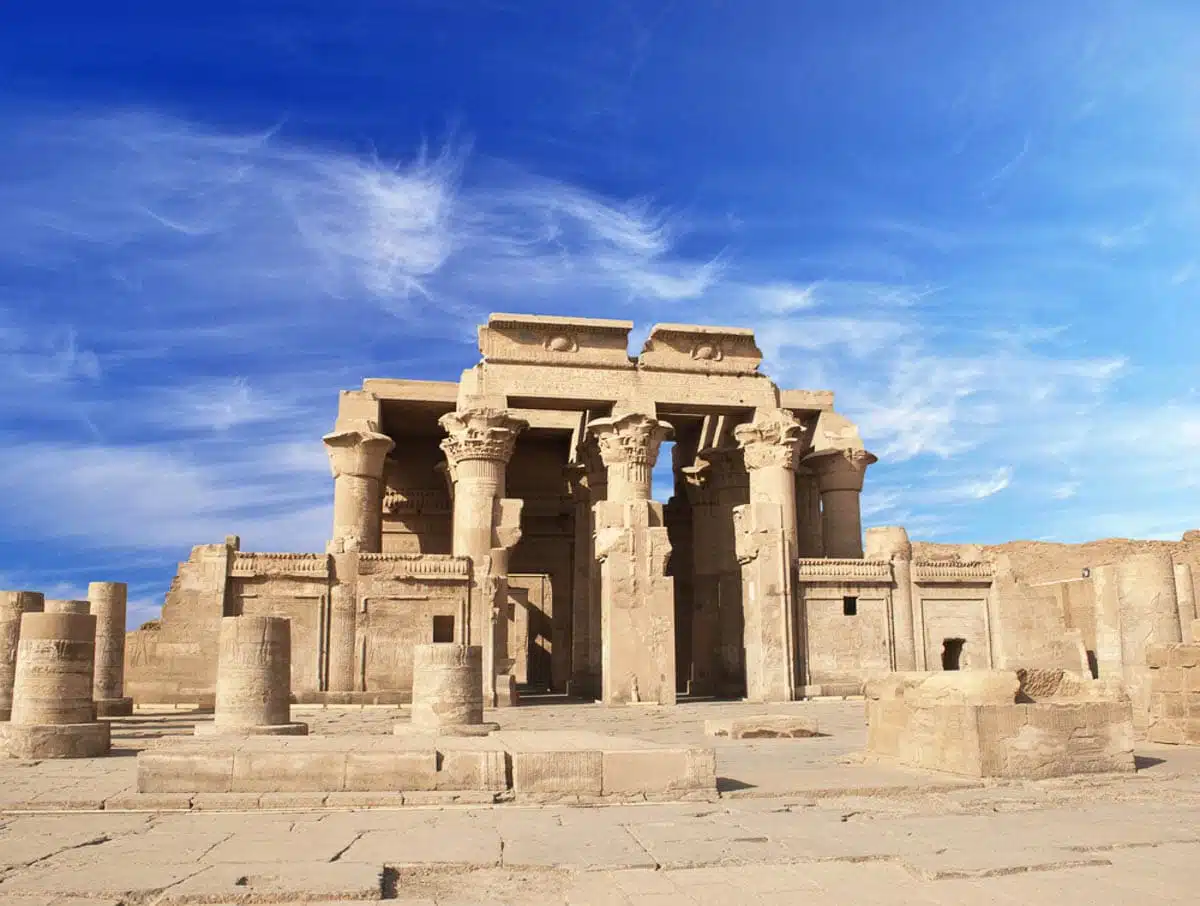
Kom Ombo is one of Ancient Egypt’s more unusual temples, built mainly during the Ptolemaic Dynasty.
Its uniqueness owes its dedication to two Gods, the crocodile-headed deity Sobek and the falcon-headed Horus the Elder.
This multi-dedication was entirely deliberate, with two sets of courts, halls, and sanctuaries built in honour of the universal themes represented by both deities.
While Kom Ombo is less complete than other Egyptian temples, it has been part-reconstructed and is home to some well-preserved and beautifully carved columns and friezes.
Do
Kom Ombo is easily reached on a cruise trip from Aswan or by train on the Aswan to Luxor line. Alternatively, a taxi from Aswan is a good option. Alternatively, the aforementioned Edfu and Kom Ombo Day Tour is well worthwhile.
Temple of Seti I
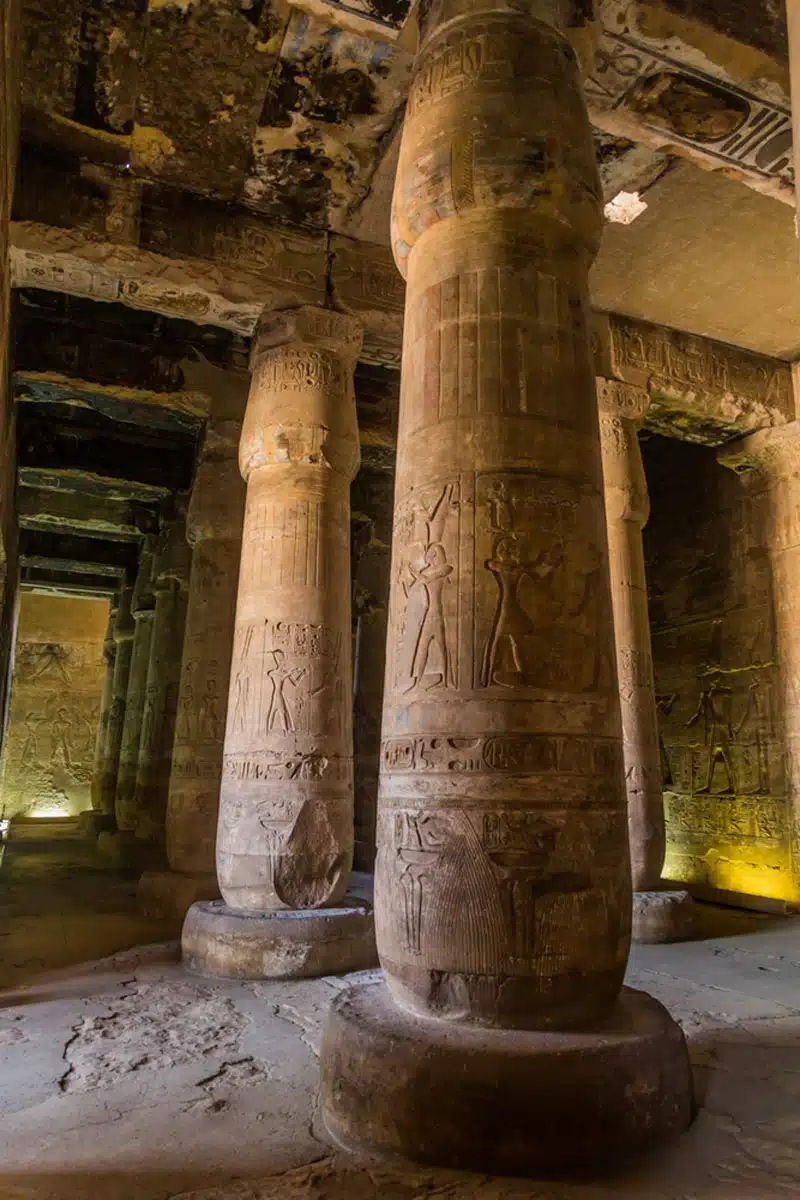
Part of the greater complex of the Temple of Abydos, the Temple of Seti I is one of Ancient Egypt’s most important archaeological sites. Initially serving as a necropolis for some of Ancient Egypt’s earliest rulers, it became a pilgrimage site for worshipers of the god Osiris.
The Temple of Seti I is unusually L-shaped and built chiefly of Limestone. The structure was completed after Seti I’s death by his son, Rameses II, in the style he later became renowned for.
Much of the site is now badly damaged. However, enough ruins survive to give a sense of the grand scale of the temple in its glory days.
Do
The Temple of Seti I is reachable by train from Luxor in al-Balyana. From there, the tourist police or an escorted taxi will get you to the site. Alternatively, take this private day trip to Abydos, Osirein and Dendera for the full guided experience.
Temple of Hathor
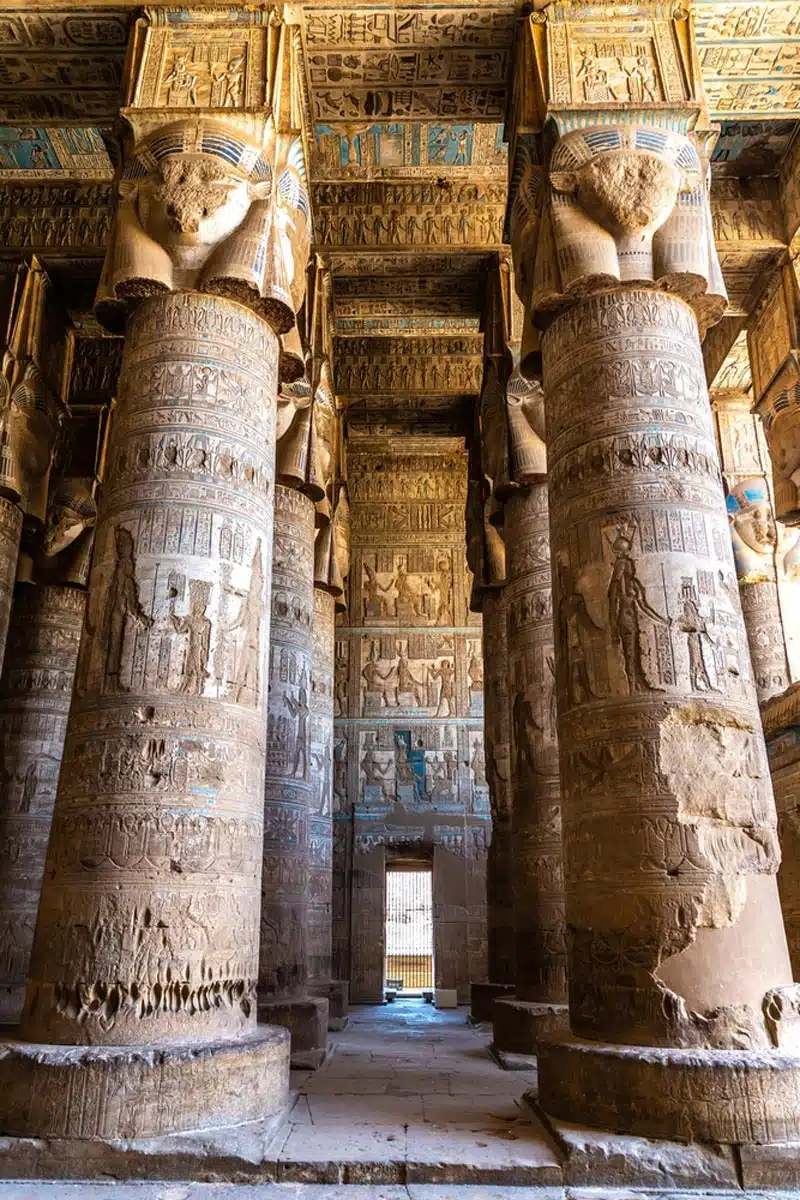
One of Egypt’s finest religious temples, the Temple of Hathor, is opposite the city of Quena on the west bank of the Nile. Dedicated to the deity of love, music and fertility, this temple is one of the best preserved in Egypt and the complex’s origins date back to around 2575 BCE.
The Temple of Hathor is a majestic temple built in the 1st Century BCE to immortalise the names of Pharaoh Ptolemy and Queen Cleopatra II in history.
The great hall is a sight to behold, with 18 enormous, ornate columns. Meanwhile, the complete interior walls contain enchanting scenes depicting offerings from Roman emperors and a ceiling full of astronomic decorations.
Do
This Nile cruise from Luxor to Dendera with a tour of the Temple is a great way to visit. If you want to travel alone, getting a taxi from Quena or by bus is recommended.
Medinat Habu
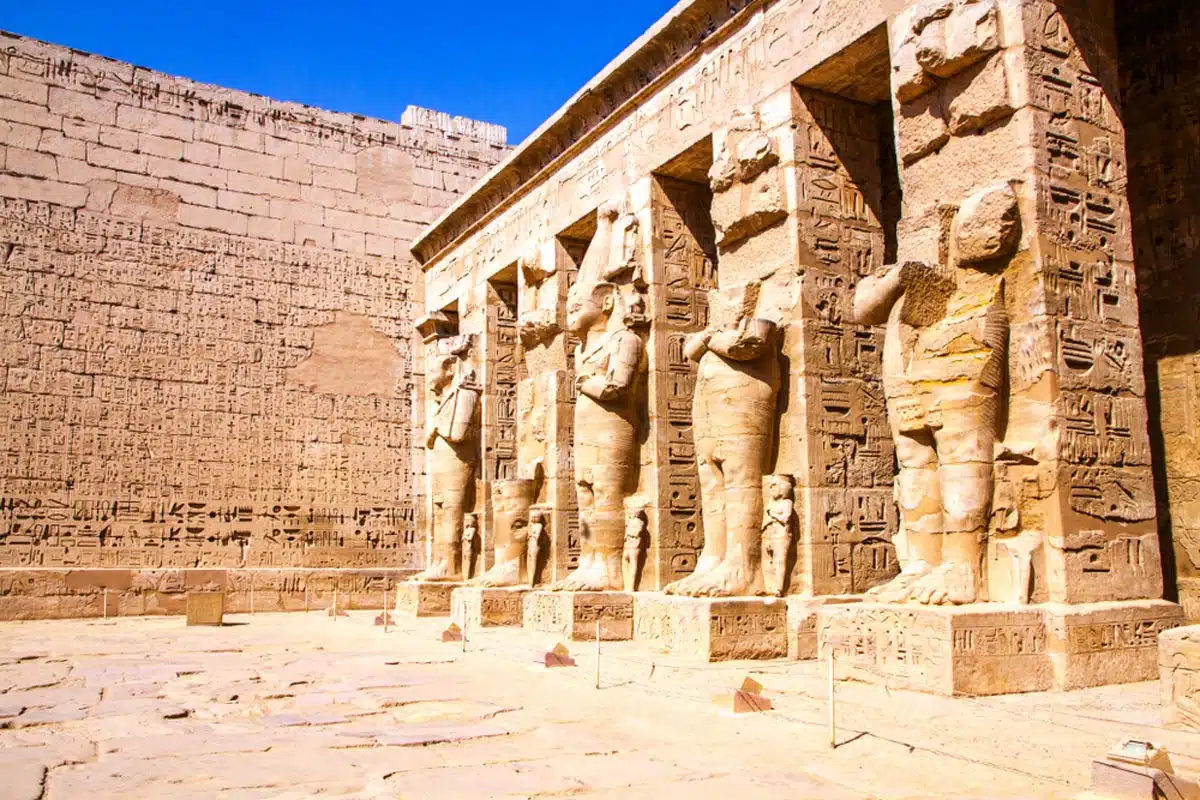
Known in ancient times as Djenet, legend has it that Medinat Habu was the place where Amun first appeared. Hatshepsut and Tuthmosis III built a temple on the site dedicated to Amun before Rameses III constructed his mortuary temple next door.
This mortuary was the site’s most prominent monument, much of which remains today, along with some original paintwork and superbly preserved carvings.
One of Ancient Egypt’s best-kept secrets, this is a magnificently preserved icon of Egyptian adulation.
Do
A tour of the Valley of the Queens includes visiting Medinat Habu from Luxor. In addition, you can take a Nile cruise and stop on the West Bank at the temple.
Kalabsha Temple
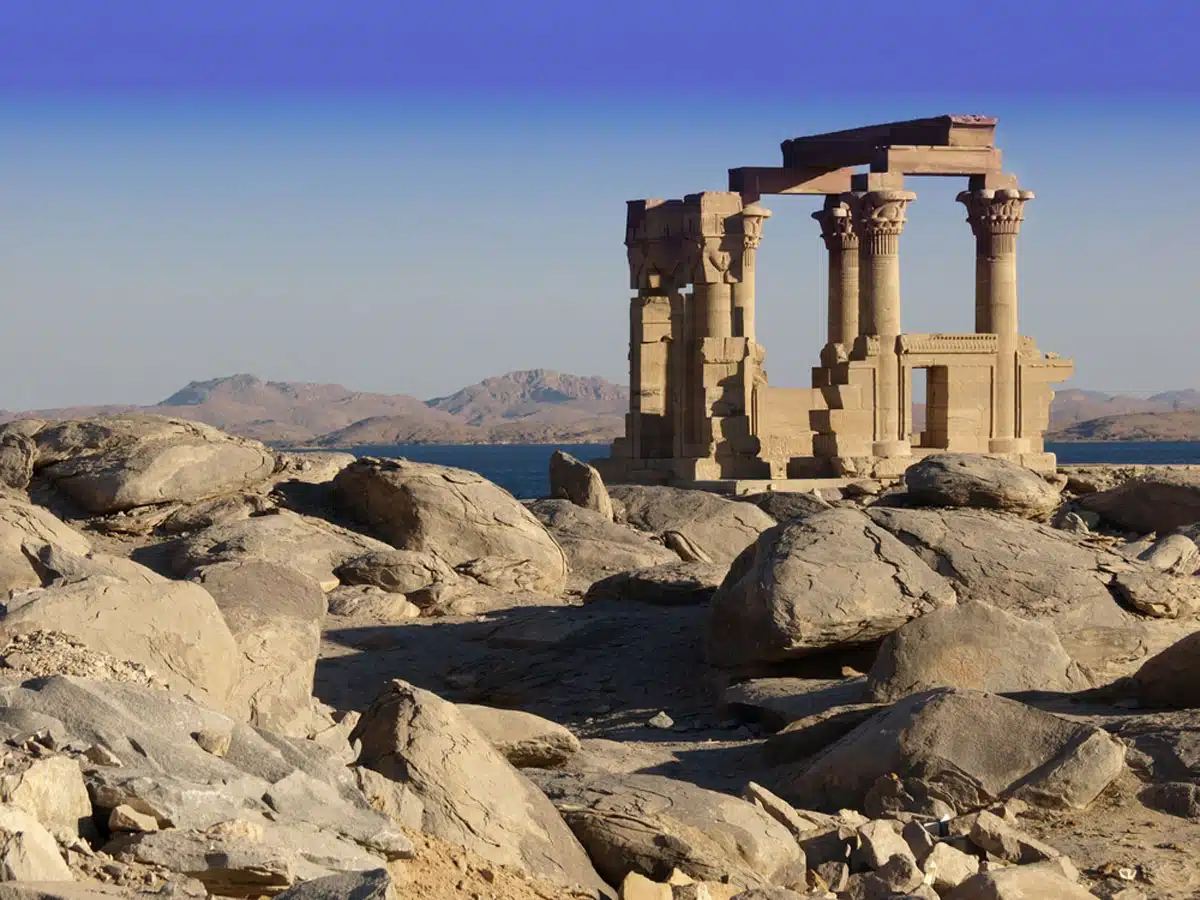
Sited within view of the Aswan Dam, the Kalabsha Temple is a stop for all Nile River cruises on Nasser Lake.
Built at the end of the Ptolemaic Period and completed under the reign of the Roman emperor Augustus, the temple was dedicated to the Nubian God Mandulis.
The imposing Pylon of the temple is connected to the main complex by a large wall, and you can drink in the beautiful views of the lake and dam from the roof.
The temple walls contain unique imagery spanning ancient Egyptian and Greek mythologies and religions, a wonderful must-visit for anyone with classical interests.
Do
Take a Nile cruise on the Nasser Lake from Aswan on your own, or enrol on this private tour of the temple and Nubian Museum.
Practical Tips for Exploring the Best Ancient Temples in Egypt
- You may need to purchase a photography pass before being able to take photos in ancient temples and tombs with anything other than your mobile phone. Check before you travel to avoid disappointment.
- These are ancient sites of tremendous cultural, religious, and historic importance to Egyptians. Follow instructions about where you can and cannot walk, and treat the temples with the utmost respect.
- Most temples in Egypt have a modest entry fee. Check ahead and make sure you include these in your budget.
- The best way to enjoy the rich history of ancient Egyptian temples is to have a guided tour.
- Dress modestly when visiting Egypt, especially when visiting temples. Wear sensible, comfortable shoes and loose-fitting clothing to stay cool during hot weather.
Best Ancient Temples in Egypt: Map
Love This? Save and Share on Pinterest
